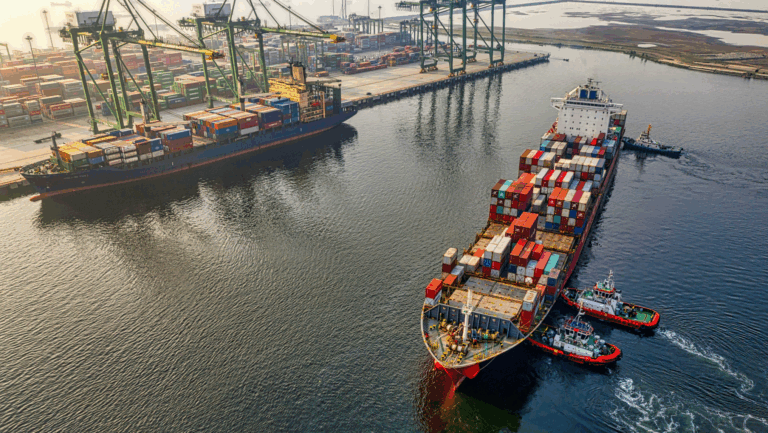The Future of Agriculture: Robotic Farming Technology
How can farmers incorporate ag robotics technology into their operations?
The concept of robotics in agriculture has brought a mixture of hopeful optimism and cautious skepticism within the farming community. While a growing world population combined with an industry that faces chronic labor shortages make the potential of these technological advancements clear, this new wave of innovation must still navigate several roadblocks before being welcomed with open arms.
There are three major ways robotics in agriculture can support the job of the American Farmer in their day-to-day operations:
- Planting and field preparation;
- Weed management; and
- Harvesting and processing.
In this article, we discuss the obstacles of integrating robotic farming technology into the agriculture industry along with the potential that exists within this futuristic tech.
Three Hurdles Facing Ag Robotics
Farming robotics technology has the ability to support a sustainable future for U.S. agriculture, but it comes with several limiting factors that must be considered and addressed before widespread adoption.
1. Dexterity and Efficiency
Harvesting crops require manual dexterity, quality discernment, and a delicate touch for easily bruised produce such as lettuce, strawberries, and other specialty crops. At this time, many harvesting robots lack the perception needed to decipher whether something is ready to be plucked off the vine. While robotic milking stations have been implemented throughout dairy farms across the nation since being introduced in the early 2000s, specialty crop harvesting robotics are still in the research and development phase and have yet to match the efficiency and accuracy of human farm labor.
2. Smart Data Protection and Accessibility
Society is propelled into a more digitized space with each passing year – and the ag industry is no exception. This accelerated virtual space is ripe with opportunities in agriculture to improve efficiency and production rates, however, it also increases the risk of cybersecurity threats on American farms.
In addition to phishing and data hacking vulnerability, farmers themselves are resorting to hacking into their own smart farm equipment when dealerships do not license out the software needed to make repairs. The “right to repair” discussion spans into other industries, but is specifically important to a farmer who often prefers to service their own equipment without relying on third parties. Farm access to rural broadband is another limiting factor, as not all farmers have a reliable internet connection on their operation. Along with the potential to increase efficiency, farm robotics also carry the concern of promoting farm consolidation unless developments in cyberinfrastructure are prioritized.
3. The Ability to Scale Affordable Production
As an experimental technology, agricultural robotics exceed the bandwidth of smaller farm operations. Although robotic tech has the potential to improve productivity and decrease the need for farm labor, it carries with it a high cost and questionable ROI that limits accessibility and the ability to scale at an affordable cost. For example, the first strawberry-harvesting robot in pre-commercial development in Spain is currently priced close to $250,000. Other robotic tech is priced monthly for hardware and software, such as an electric harvesting robotic system introduced in California which spans between $800 and $1,200 per month.
Farm robotic tech researchers are aware of these limiting factors and developing solutions each year to make farming robots more reliable and accessible to the everyday American Farmer.
Recent Developments in Ag Robotic Technology
The industry of ag robotics continues to flourish – estimated at a $4.6 billion market in 2020 and projected to grow to $20.3 billion by 2025. Promising advancements in the world of robotic farming technology include:
- A French-based agtech start-up company created three types of weeding automation robots that were introduced in California in 2019.
- Researchers from Cambridge University created the Vegebot – a field-tested robotic harvesting system to handle delicate vegetables.
- Scientists from the Skolkovo Institute of Science and Technology in Russia released a report this year regarding the development of an AI greenhouse with agricultural task automation software.
- A Santa Monica-based ag robotics start-up company recently launched Carry – an electric harvesting robot that helps farmers transport crops in an effort to lessen the physical demand of farming.
In 2014, the National Science Foundation (NSF) and other federal agencies including the United States Department of Agriculture (USDA), launched the National Robotics Initiative to support the ongoing development and research of robotic technology in U.S. agriculture.
The National Robotic Initiative 3.0 is currently accepting agtech research grant proposals through May 3rd, 2021, and reopening for submissions February 8th through February 22nd, 2022.
Supporting the Future of Agriculture with Flexible Financing
From hauling harvested produce to pruning grape vineyards, the future carries with it exciting new advancements in agritech to support the efforts of American farmers and, hopefully, make their job of feeding our world a little easier.
As a nationwide lender invested in the long-term success of the American family farm, AgAmerica supports this essential industry by going beyond the confines of traditional lenders to provide educational resources and flexible financing to equip these farms to thrive in an evolving world.
Contact us today to learn more about our customized operating lines of credit and spectrum of financing solutions that can support your farm for generations to come.






